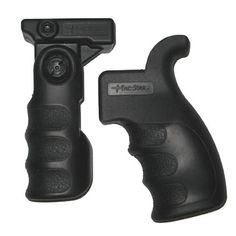How to Grip a Pistol: 9 Steps

Learning how to grip a pistol correctly is essential for accurate and safe shooting. A proper grip helps you control the gun, improves your aim, and minimizes the risk of injury. This article breaks down the process into nine easy-to-follow steps to help you master your grip and become more confident on the range or in self-defense situations.
1. Choose the right pistol size for your hand: Start by selecting a firearm that fits comfortably in your hand. If it’s too large or too small, it will be difficult to grip securely and maintain control during firing.
2. Place the web of your strong hand high on the backstrap: Your dominant hand should be positioned with the web between thumb and index finger as high up on the backstrap as possible. This placement allows for maximum control of recoil and muzzle flip.
3. Wrap fingers around front strap: Curl your strong-hand fingers firmly around the front strap of the pistol, ensuring an even pressure throughout and avoiding any gaps in contact.
4. Position trigger finger alongside frame: Keep your trigger finger off of the trigger until you are prepared to shoot. Rest it straight along the frame, parallel to the slide.
5. Position support hand under trigger guard: If using a two-handed grip, bring your non-dominant hand underneath the trigger guard, with fingers extended and palm making contact with the underside of your dominant hand.
6. Wrap support-hand fingers around strong-hand fingers: Encircle your strong-hand fingers with those of your support hand, interlocking them for a firm hold. Keep your elbows slightly bent to absorb recoil effectively.
7. Align thumbs along frame: Both thumbs should lie alongside each other against the frame with minimal space between them, providing additional control over muzzle flip with minimal interference in slide operation.
8. Properly aligned wrists: Make sure that both wrists are aligned effectively; this means that your support hand’s wrist is slightly bent downward to create a straight, stable platform for recoil management.
9. Consistent grip pressure: Apply constant and even pressure with both hands at all times while gripping the pistol. Keep your grip firm and not tense to avoid reduced accuracy from shaking or wobbling.
By practicing these nine steps and implementing them into your pistol-shooting technique, you’ll be able to develop a solid grip that improves your accuracy, firearm control, and overall shooting experience. Always remember to train regularly, follow range safety rules, and comply with local firearms laws as you continue to develop your skills.






